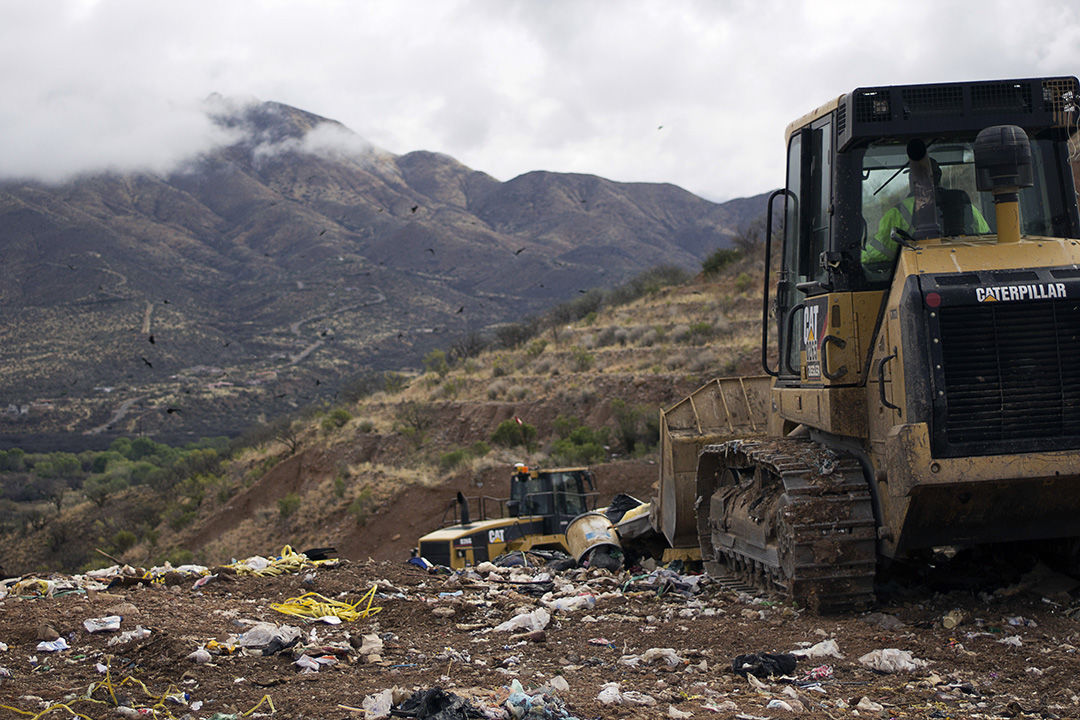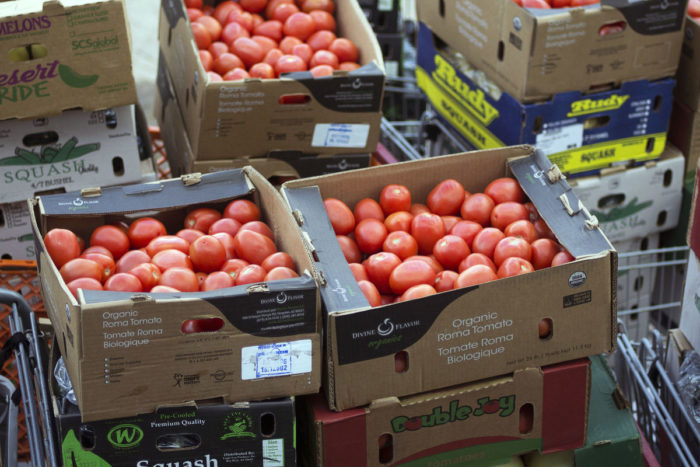Farmers from Mexico bring nearly 20 million pounds of produce across the border into this once-bustling border town each year, according to statistics by U.S. Department of Agriculture in 2014. From there, they sell it to distribution companies, who then sell it to grocery stores.
The problem happens, though, when the food is not sold. It can languish in Nogales, headed for landfills.
“If the product look bad, we dump them,” said Fernando Rodriguez, who works in sales at Franks Distribution in Nogales, one of the hundreds of warehouses stringing along the highway from Nogales to Tucson, 70 miles away.
That “unwanted” produce provides a lifeline for many outlets that deal with hunger in Southern Arizona.

More than 200 food-distribution companies throughout Southern Arizona send unwanted produce to the Borderlands Food Bank, where it is distributed to people who need it in a farmers market-like atmosphere. (Photo: tucson.com)
For example, more than 200 food-distribution companies throughout Southern Arizona send unwanted produce to the Borderlands Food Bank in Nogales. That accounts for approximately 25 to 40 million pounds of food that otherwise would be dumped into landfills each year.
Grocery stores don’t always buy the produce that crosses the border from farms in Mexico. Sometimes there is no market for a particular fruit or vegetable, or the market is too high or too low. Sometimes the product is too small or too big.
Depending on consumer demand for any particular product at any time, grocery stores choose to buy — or deny. When they don’t buy the produce, the distribution companies have few options. They can either take it to a landfill (at a cost to them) — or find a way to get it into a donation distribution network like Borderlands Food Bank.
In 2014, the United States Department of Agriculture reported that between 30 to 40 percent of the American food supply is wasted.
Most happens at the distributional level — like when it can’t be sold to grocery stores.
“A lot of food waste is happening in the transit process,” said Michaela Webb, a University of Arizona student and worker for the Compost Cats, a student group that collects food waste and scraps from the city of Tucson, composts it and turns it into soil. “If they look at a semi-truck and deem that more than 10 percent of the food will be bad before the time it reaches its destination, they throw the whole of the truck — all the contents— away.”
The Borderlands Food Bank works with the distribution companies at its warehouse in Nogales to take the produce and give it to people who need it. The food bank has set up a program throughout Southern Arizona, Tucson and Phoenix, called Produce on Wheels — With Out Waste. (P.O.W. W.O.W.). It’s like a farmers market that runs on donations. Anyone can come and contribute $10 to shop for up to 60 pounds of produce.



